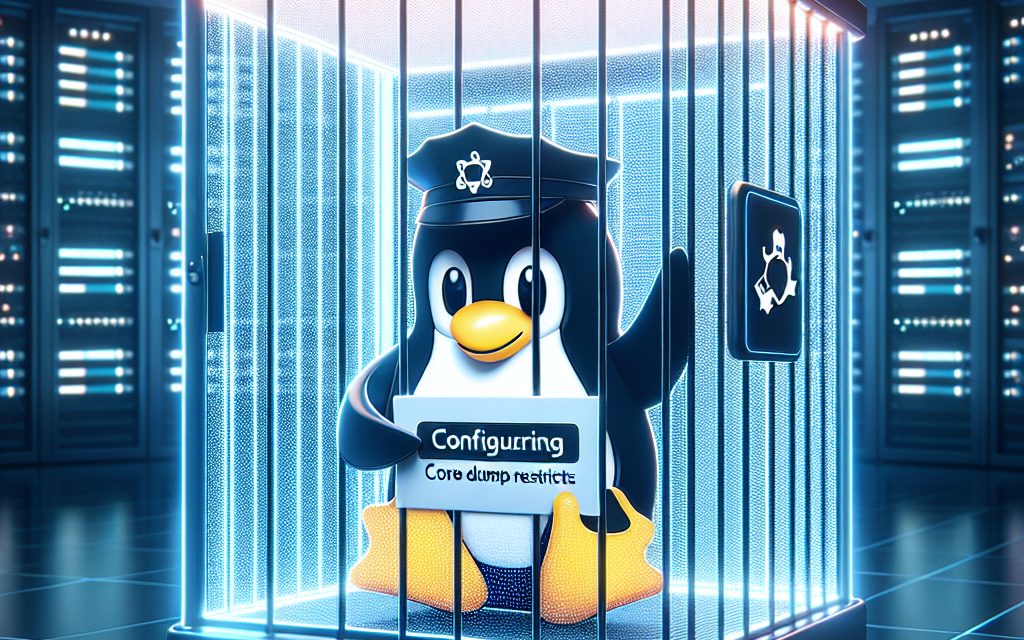In the world of Linux system administration, security is a paramount concern. One aspect that is often overlooked but can pose significant risks is the management of core dumps. Core dumps are files that capture the memory of a running process at a specific time, typically when it crashes. While they are useful for developers in debugging applications, they can also inadvertently expose sensitive information such as passwords, cryptographic keys, and other confidential data. In this article, we will explore how to configure core dump restrictions to enhance security on Linux servers.
Understanding Core Dumps
When a program encounters a critical error, the operating system may create a core dump, which contains a snapshot of the program’s memory and various CPU registers. By default, core dumps are often stored in the current working directory of the process that created them, and their filenames often include the name of the executable.
However, a core dump can reveal a wealth of information about your running applications and the environment in which they operate. An attacker exploiting a vulnerability could potentially access these files and retrieve sensitive data.
1. Assess the Need for Core Dumps
Before implementing any restrictions, it is crucial to evaluate whether your applications require the generation of core dumps. For many production servers, particularly those handling sensitive data, the potential risks might outweigh the benefits. If your applications do not need to produce core dumps for debugging purposes, consider disabling them altogether.
To disable core dumps:
You can use the following command to set the core dump size to zero:
bash
ulimit -c 0
This command will prevent the creation of core dumps in the current shell session. If you want to make this change permanent for all users, you can modify the /etc/security/limits.conf file by adding the following lines:
plaintext
-
hard core 0 - soft core 0
2. Configuring Core Dump Patterns
If your applications do require core dumps for debugging, you can restrict their creation more securely by configuring core dump patterns.
Steps to configure core dump patterns:
-
Edit the
/proc/sys/kernel/core_patternfile to specify where core dumps should be stored and their naming convention. For example:bash
echo “/var/dumps/core.%e.%p.%h.%t” > /proc/sys/kernel/core_patternIn this example:
%ewill be replaced with the executable name%pwith the process ID%hwith the hostname%twith the time of the dump
-
Ensure that the directory where core dumps are stored has appropriate permissions. Create a dedicated directory if necessary:
bash
mkdir /var/dumps
chmod 700 /var/dumps -
Only allow specific processes to create core dumps by configuring the
proc_sys_kernel_core_uses_pidsetting:bash
echo 1 > /proc/sys/kernel/core_uses_pid -
Finally, configure systemd services (if applicable) to disable core dumps for services that do not need them. Modify the service files under
/etc/systemd/system/or use drop-in configuration files:ini
[Service]
LimitCORE=0
3. Monitoring and Logging Core Dumps
Even with restrictions in place, it is wise to set up monitoring and logging for core dump generation attempts. You can use auditd to keep track of core dump activities and detect any unauthorized access.
Installing and configuring auditd:
-
Install
auditd:bash
sudo apt-get install auditd -
Add a rule to monitor the core dump directory:
bash
echo “watch /var/dumps” >> /etc/audit/rules.d/core.rules -
Restart the audit daemon:
bash
systemctl restart auditd
Now, you can monitor the /var/log/audit/audit.log file for any unexpected access to core dumps.
Conclusion
Configuring core dump restrictions is a critical component of a robust security posture for Linux servers. By assessing the need for core dumps, setting appropriate permissions, and monitoring their usage, you can significantly reduce the risk of sensitive data leakage. While core dumps can be invaluable for debugging, always weigh their necessity against the potential security implications.
For more insights into securing your Linux servers, stay tuned to the WafaTech Blog for future articles!
References
- Linux man pages for
ulimit,core, andauditd - Online Linux security resources and best practices
By putting these strategies into practice, you’ll be taking significant steps toward securing your Linux servers against potential threats posed by mismanaged core dumps. Happy securing!





